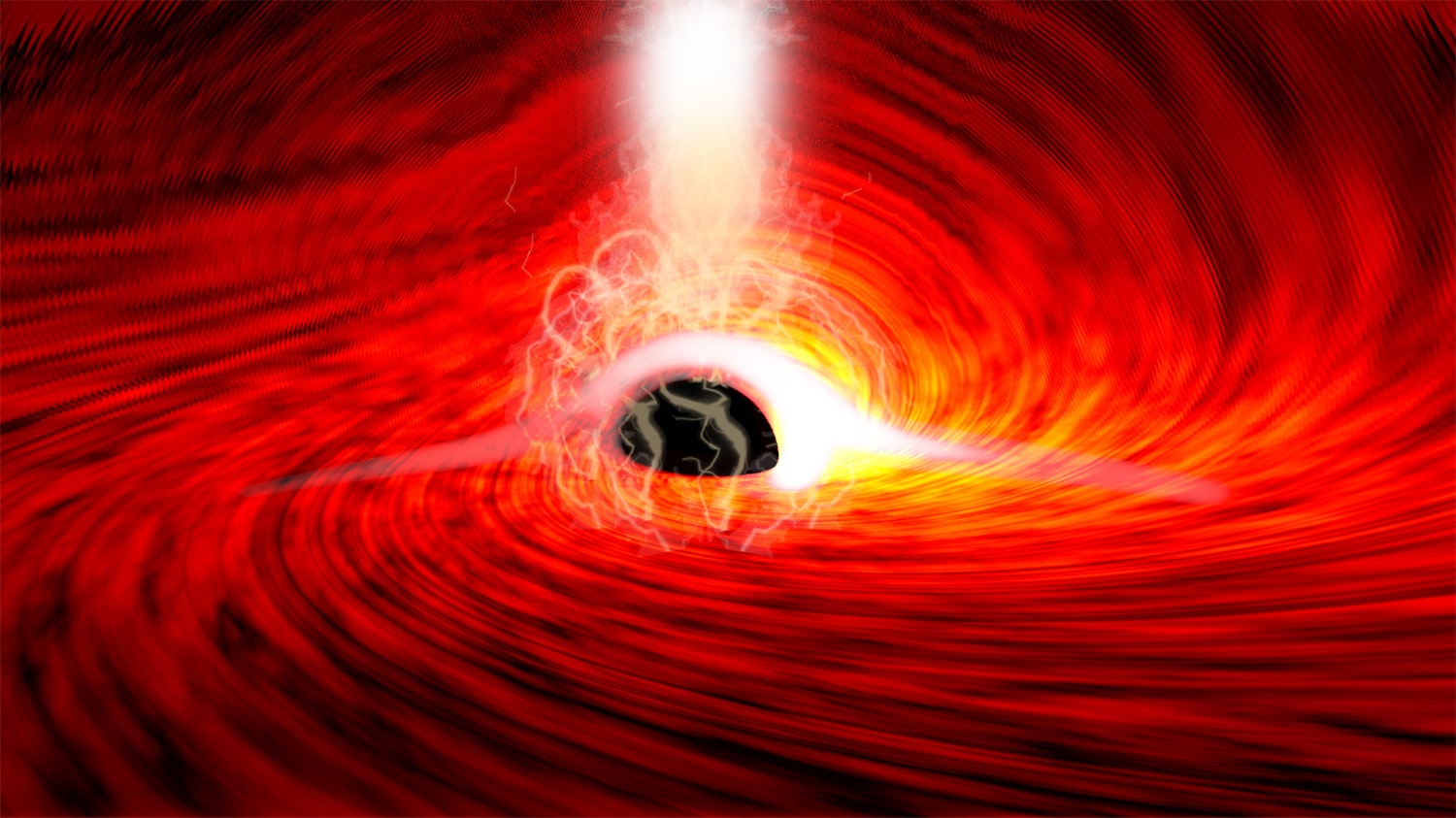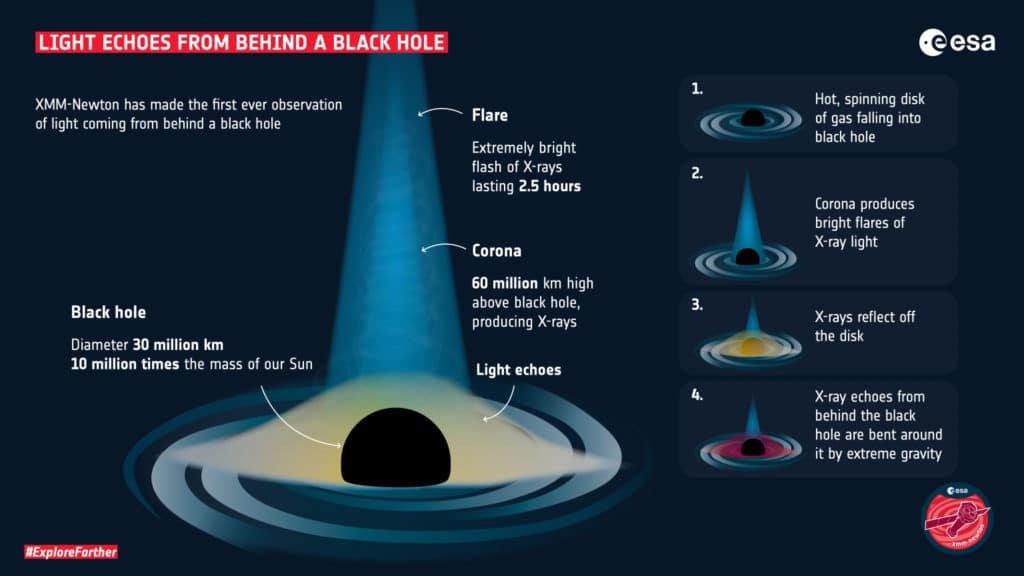
A black hole is a highly dense object in space from which no light can escape. It means the region beyond which there is no return, so we shouldn’t be able to see anything that’s behind the black hole.
A discovery contradicts this belief: For the first time, Stanford astrophysicists report the detection of light from behind a black hole. It sounds astounding! Isn’t it?
Astrophysicists report the first-ever recordings of X-ray emissions from the far side of a black hole at the center of a galaxy 800 million light-years away. The discovery is the prediction of Einstein’s theory of general relativity.
An intriguing pattern was observed first: a series of bright flares of X-rays – exciting but not unprecedented. Then, the telescoped observed unexpected additional flashes of X-rays. These x-ray emissions were smaller and of different colors than bright flares.
Einstein’s Theory Of General Relativity suggests that these luminous echoes were consistent with X-rays reflected from behind the black hole. But, a basic understanding of black holes tells us that is a strange place for light to come from.

Stanford University astrophysicist Dan Wilkins said, “The reason we can see that is because the black hole is warping space, bending light and twisting magnetic fields around itself.”
Roger Blandford, a co-author of the paper, said, “Fifty years ago when astrophysicists starting speculating about how the magnetic field might behave close to a black hole, they had no idea that one day we might have the techniques to observe this directly and see Einstein’s general theory of relativity in action.”
Scientists made this discovery while gathering more knowledge on a mysterious feature of certain black holes, called a corona. Suppose there’s enough matter falling into a supermassive black hole. In that case, the area shines in super bright X-rays, continuous sources of light in the universe, forming a corona around the black hole.
The corona around the black hole collects ultra-hot gas particles that form as gas from the disk falls into the black hole. The gas particles sliding into the black hole superheats to millions of degrees. At such temperatures, electrons separate from atoms, creating a magnetized plasma.
The spinning magnetic field arcs of the black hole twirls about itself so much that it eventually breaks altogether. This magnetic field heats everything around it and produces these high-energy electrons that then go on to produce the X-rays.
While investigating the origin of the flares, scientists noticed a series of smaller flashes. These flashes were the same X-ray flares but reflected from the back of the disk – a first glimpse at the far side of a black hole.
Undoubtedly, more research is required to understand black hole corona.
Wilkins said, “It’s got a much bigger mirror than we’ve ever had on an X-ray telescope, and it’s going to let us get higher resolution looks in much shorter observation times. So, the picture we are starting to get from the data at the moment is going to become much clearer with these new observatories.”
Journal Reference:
- Wilkins, D.R., Gallo, L.C., Costantini, E. et al. Light bending and X-ray echo behind a supermassive black hole. Nature 595, 657–660 (2021). DOI: 10.1038/s41586-021-03667-0
Continue reading Intriguing: First-ever recordings of light from the far side of a black hole on Tech Explorist.
0 comments:
Post a Comment